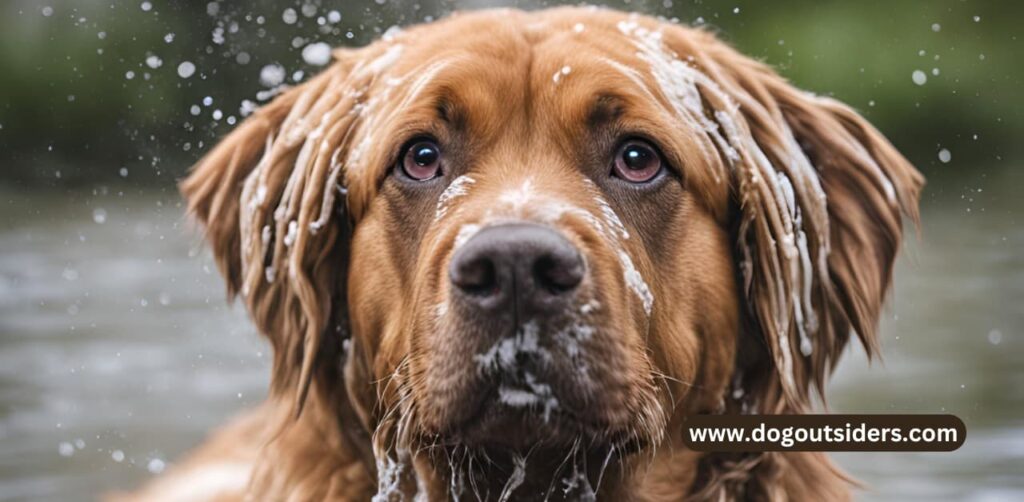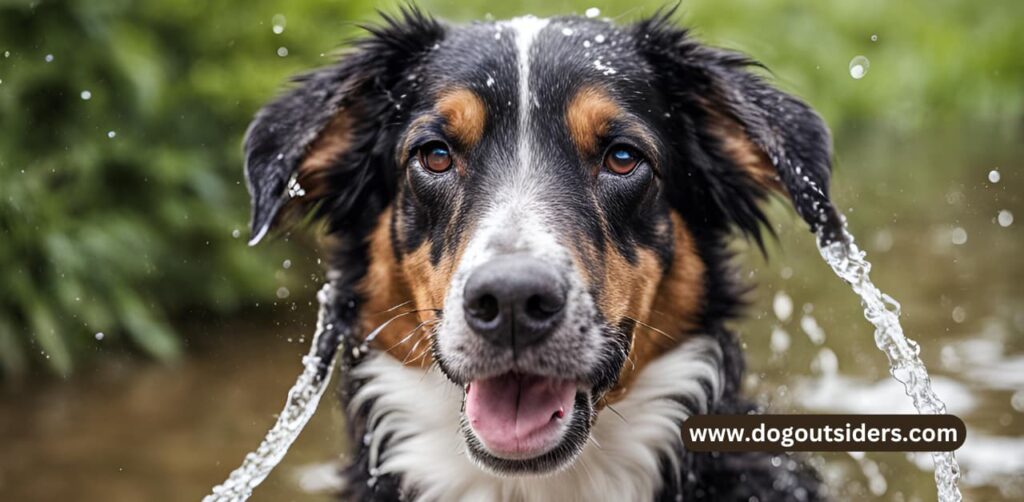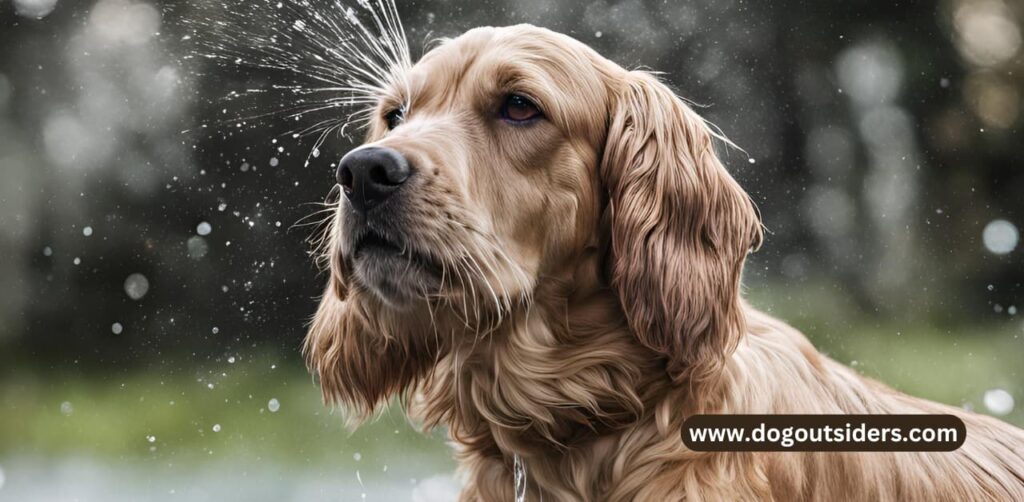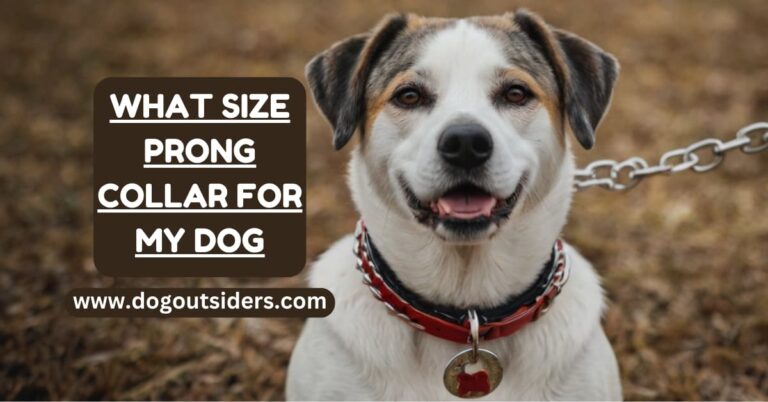Curious if the hose water might be too cold for your dog’s bath time? I’ve had the same question as a pet parent. Let’s look into ways to ensure your furry friend’s comfort during baths and how to turn bath time into a fun experience for both of you. Get ready for practical tips on maintaining the right water temperature and creating a stress-free bonding moment with your beloved canine companion. Let’s explore is hose water too cold to bathe a dog?
Key Takeaways
- Adjust the Water Temperature: Find the right balance between warmth and coldness for your dog’s comfort during bath time.
- Be Aware of Potential Risks: Understand the dangers of using cold hose water for bathing to prevent discomfort or health issues for your pet.
- Prepare Adequately: Set up a safe and comfortable outdoor bathing area for your dog to ensure a positive bathing experience.
- Follow Proper Bathing Steps: Implement a systematic approach to bathing your dog outside to make the process efficient and effective.
- Control Water Pressure: Regulate the water flow to avoid startling or overwhelming your dog during the bath.
- Prioritize Comfort: Create a soothing environment and handle your dog gently to make the bathing experience enjoyable for them.
Is Hose Water Too Cold to Bathe a Dog
When bathing a dog with hose water, it’s essential to consider the temperature to ensure your furry friend is comfortable. In general, hose water can be too cold for bathing a dog, especially if it’s very cold outside or if the water has been sitting in the hose for a while. It’s best to test the water temperature with your hand before spraying your dog to avoid any discomfort. If the water feels too cold for you, it’s likely too cold for your dog as well. To make the bathing experience more pleasant for your pet, consider using lukewarm water or allowing the water to run for a bit to warm up before bathing them.
Deciding the Best Water Temperature

Check Water Temperature
Before bathing your dog, always check the water temperature to ensure it’s suitable for your furry friend. Use a thermometer to gauge the water temperature accurately.
Opt for Lukewarm Water
Opting for lukewarm water is ideal when bathing your dog. This temperature ensures your pet is comfortable and prevents any shocks from sudden changes.
I remember the time when I first bathed my dog with lukewarm water. The experience was much smoother, and my dog seemed more relaxed during the entire process.
Avoid Cold Water
Avoid using cold water when bathing your dog, as it may not clean effectively and can be uncomfortable for your pet. Cold water can also cause shivering in dogs, leading to stress and discomfort.
My dog used to get anxious during baths until I switched to lukewarm water. The change made a significant difference in how he reacted to bath time.
Risks of Bathing in Cold Hose Water

Compliance Issues
Cold water can make your dog less compliant during baths. Dogs may become restless and uncooperative when exposed to cold hose water, making the bathing process challenging and stressful for both you and your furry friend.
Unpleasant Experience
Using cold water may lead to a less enjoyable bathing experience for your pet. The shock of cold water can cause discomfort and anxiety in dogs, resulting in a negative association with bath time. This can lead to reluctance or fear of future baths.
Cleaning Efficiency
Warm water is recommended over cold water for better cleaning results. Cold hose water may not effectively remove dirt, grime, and oils from your dog’s coat, leaving them inadequately cleaned. Warm water helps to loosen debris and ensures a thorough cleaning process.
I remember the first time I tried bathing my dog with cold hose water on a chilly day. My dog shivered uncontrollably and kept trying to escape the stream of water, making it difficult to clean him properly. It was a stressful experience for both of us.
When I switched to using warm water for bath time, I noticed a significant difference in my dog’s behavior. He seemed more relaxed and cooperative during baths, making the whole process smoother and more enjoyable for both of us.
Preparing for an Outdoor Bath
Setting Up
Gather all necessary bathing supplies near the outdoor bathing area. Have absorbent towels, dog-safe shampoo, and brushes readily available. Clip your dog’s leash or harness to prevent escape during the bath.
When preparing for an outdoor bath, it’s essential to have everything within reach. Absorbent towels are crucial for drying your furry friend quickly after the bath. Having dog-safe shampoo ensures a gentle and safe cleansing experience for your pet.
Ensuring Safety
Securely clip your dog’s leash or harness before starting the bath. This prevents any sudden escapes and keeps your pet under control during the bathing process. Use a basin or bucket filled with warm water to rinse off the shampoo thoroughly.
I always make sure to securely attach my dog’s leash before starting the bath. This simple step helps in preventing any unexpected dashes away from the bathing area. Using a bucket filled with warm water makes it easier to rinse off all the shampoo residue effectively.
Steps to Bathe Your Dog Outside
Wetting Your Dog
Thoroughly wet your dog, ensuring the water reaches the underbelly and legs for a complete clean. Using low water pressure is key to prevent any discomfort for your furry friend. If the hose pressure feels too strong, try scooping water onto your dog instead.
Using Leash
Secure your dog with a leash to maintain control during the bathing process. This helps in preventing any sudden movements that could startle or harm your dog. A leash also ensures that many dogs stay in one place while being bathed.
Rinsing Off Soap
After lathering up, rinse off all soap thoroughly from your dog’s fur to avoid skin irritation. Soap residue left on the skin can cause itching and discomfort for your dog. Make sure to rinse multiple times until the water runs clear.
Managing Water Pressure

Low Pressure
Keep water pressure low to prevent discomfort for your dog during bath time. High-pressure water can startle and distress your furry friend, making the bathing experience unpleasant.
Maintaining a gentle flow of water ensures that your dog feels calm and relaxed throughout the process. It also helps in effectively rinsing off shampoo and dirt from their coat without causing any stress.
Regular Testing
Frequently test the hose pressure to ensure it is at an optimal level for your dog’s comfort. By checking the pressure before each bath session, you can make necessary adjustments to avoid any sudden bursts of high-pressure water.
Using a pressure gauge can help you monitor the water pressure accurately and make informed decisions about adjusting it as needed. This proactive approach ensures a safe and enjoyable bathing experience for your canine companion.
Attachments for Control
Consider using attachments to control water flow if you find it challenging to maintain a consistent low pressure. Attachments such as spray nozzles or shower heads can help regulate the flow of water, allowing you to customize the pressure according to your dog’s needs.
These attachments not only provide better control over the water pressure but also make it easier to target specific areas while bathing your dog. They offer versatility in adjusting the flow, ensuring a gentle and soothing bath experience for your furry friend.
Ensuring Comfort During the Bath
Gentle Wetting
When bathing your dog, ensure a calm environment to help them relax. Start by gently wetting their fur with warm water.
Taking time to wet your dog slowly can be beneficial, especially if they are sensitive to water. This approach helps them adjust gradually.
Warm Water Benefits
Using warm water during bath time is essential for your dog’s comfort. Warm water makes the bathing experience more pleasant for them.
Incorporating warm water also aids in relaxing your dog’s muscles and ensuring a soothing bath experience. It can help prevent any discomfort from cold water.
Proper Rinsing Technique
When rinsing off soap from your dog’s fur, make sure to do it thoroughly. Ensure all soap residue is washed away to prevent skin irritations.
Rinsing is crucial as leftover soap can cause skin dryness and itchiness in dogs. Thorough rinsing ensures their skin remains healthy and free from irritation.
Post-Bath Warmth and Comfort
Cozy Spot
After bathing your dog, offer a cozy spot for them to dry off comfortably. This can be a warm, soft towel or a pet bed.
I always make sure to have a designated area with a cozy blanket where my dog can relax after his bath. It’s essential to provide a warm and comfortable space for them to unwind.
Pet Cots
Consider using pet cots or indoor mats to elevate your dog off the cold floor post-bath. These items provide insulation and comfort.
I find that using a pet cot helps keep my dog warm and prevents direct contact with the chilly floor after bath time. It’s a simple way to ensure their comfort.
Preventing Chills
Ensuring your dog is warm and comfortable post-bath is crucial in preventing chills. Avoid exposing them to drafts or cold surfaces.
My pup tends to get chilly easily, so I always make sure to dry him thoroughly and keep him warm after his bath. It’s important for their well-being.
Conclusion:
After weighing the pros and cons of using cold hose water to bathe your dog, it’s clear that while it may be convenient, it comes with risks. Ensuring the right water temperature, managing water pressure, and providing post-bath warmth are crucial for your furry friend’s comfort and health. By preparing adequately and following the steps outlined, you can make outdoor baths a safer and more enjoyable experience for your pet.
Before you grab that hose, remember to prioritize your dog’s well-being by taking the necessary precautions. With a little extra effort and attention to detail, you can turn a potentially chilly bath into a refreshing and safe grooming session for your canine companion. Your dog will thank you for it!
FAQ’s:
Cold hose water can shock a dog’s system, leading to health issues like hypothermia. It’s best to use lukewarm water for bathing to ensure your dog’s comfort and well-being.
To provide a comfortable bath experience, mix cold water from the hose with warm water if possible. This will help regulate the temperature and prevent it from being too cold for your dog.
Ensure a stress-free bath by speaking calmly to your dog, using gentle movements, and providing treats as positive reinforcement. Creating a relaxing environment will help your dog feel at ease during the bath.
After bathing your dog outside, dry them thoroughly with a towel to prevent them from getting chilled. Ensure they are warm and comfortable post-bath by keeping them in a cozy area.
High water pressure can be uncomfortable or even painful for dogs, potentially causing stress or injury. It is important to adjust the pressure to a gentle flow that won’t startle or harm your pet.






